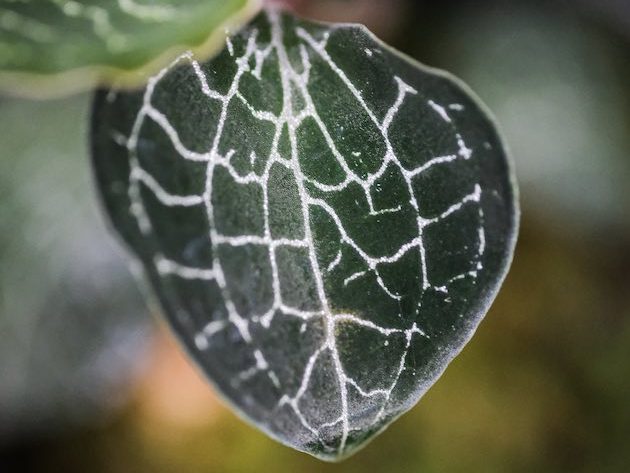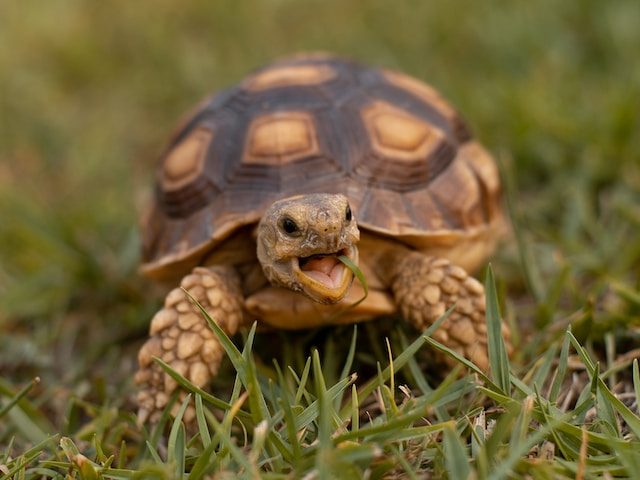
Loved for their lightning bolt leaf patterns, the Jewel Orchid is a pretty unique houseplant! Their incredible leaves do come at a cost though as they can be a little fussy about their care and environment meaning it’s not uncommon for issues to crop up here and there. The key to solving and treating any problems that come up is fixing the issue early after making the right diagnosis. This is why it’s super important to keep a close eye on all of your plants to spot any early warning signs.
In this post we will cover several of the most common problems that can occur with Jewel Orchids, ensuring that you have the right methods to get your plant back to full health. We’ve also written a complete guide on how to treat brown leaves on Jewel Orchids that might be helpful too.
Causes of yellow Jewel Orchid leaves
Overwatering.
Too much water tends to be the most common reason why Jewel Orchids develop yellow leaves so we recommend starting here when looking to diagnose the issue. Check your Jewel Orchid’s soil straight away to see if it is waterlogged and replace it with fresh potting mix to allow the roots to recover. We also recommend trimming away the rotting roots as they won’t recover. To avoid the problem causing more yellow leaves in future, make sure you are checking the moisture levels in the soil before watering to ensure that the soil has had enough time to dry out.
Sunburn.
Although a lack of light can also cause several issues with Jewel Orchids and houseplants in general, yellow leaves can often be a consequence of too much direct light. Intense sunlight will very quickly scorch and burn the leaves of your Jewel Orchid drying out and burning the leaves, causing yellow/ yellow patches. If this is the cause of the yellow leaves, trim away the scorched areas and move your Jewel Orchid to an area of your home with indirect sunlight.
Pests can cause yellow spots.
A less common but more serious reason why your Jewel Orchid’s leaves are turning yellow is a pest infestation. These unwanted guests suck on the leaves, exhausting them and causing them to turn yellow and often drop from the plant.
If you find pests on your Jewel Orchid there are a few steps you need to take immediately. Firstly, isolate the infected plant away from all of your other houseplants to stop the pests from spreading across your plants. To treat the pests on your Jewel Orchid, and prevent more yellow leaves, treat your plant with an organic insecticide.
Natural ageing.
If the yellowing on your Jewel Orchid is quite slow (one or two every few months) then this might be normal and nothing to worry about. As plants mature, they will lose some of their oldest leaves to grow new bigger ones. These leaves will often turn yellow before falling from the plant.
Jewel Orchids can lose leaves for a variety of reasons
Overwatering.
If you find that your Jewel Orchid is starting to lose leaves from the bottom up, then it may be a problem with the roots that’s causing the issue. Jewel Orchids don’t like super soggy soil for long periods of time as they have fairly delicate roots in comparison to a lot of other houseplants.
If the roots start to rot the plant can become unstable and can’t get the needed nutrients from its root system. Confirm the issue by checking the soil moisture as well as seeing if the roots have started to rot. They will be quite soft and dark in colour if they have. Replace any waterlogged soil, trim away the rotten roots and make sure to cut back on how much or how frequently you are watering your Jewel Orchid.
Shock and stress.
Your Jewel Orchid might also be losing leaves due to environmental stress. This can happen after propagation, repotting, moving your plant to a new spot or any other sudden change in environment.
As long as the crucial elements like light, warmth, humidity and water are right for your Jewel Orchid, the loss of leaves should be temporary. Monitor the leaf drop rate and if your Jewel Orchid is still losing leaves after a few weeks, this might suggest something else is wrong.
Cold temperatures.
Jewel Orchids will survive well in rooms with average room temperature but can be quite sensitive to cold temperatures which can cause their leaves to fall off in response. Make sure to draft proof any doors and windows that are near to your Jewel Orchid to avoid cold drafts coming in from outside.
If your Jewel Orchid is losing leaves in summer, cold temperatures is probably the last thing you think of. However, it could be due to close proximity to any AC vents so watch out for those. We strongly recommend using a digital thermometer if you don’t already to monitor any temperature fluctuations.
Why does my Jewel Orchid have curling leaves?
Underwatering.
One of the ways that plants try to retain moisture is by curling their leaves. This is why a lack of water is the first thing you should look for when you spot this problem occurring on your Jewel Orchid. Check the moisture levels in the soil and see if the roots have started to crisp up. This would suggest that the issue has been going on for a while so it’s important to act quickly.
But before you pour a bucket full of water over your plant, it’s important that you solve this problem slowly or otherwise you might cause shock and stress for your Jewel Orchid. Slowly reintroduce water over the course of a week and the leaves should slowly uncurl.
Low humidity levels.
But it’s not just a lack of moisture in the soil that can cause your Jewel Orchid to develop curling leaves, but a lack of moisture in the air can have a similar impact. Dry air will over time start to dry out the leaves on your plant and one of the earlier warning signs is curling leaves. Luckily, fixing this issue is easy as you can mist your plant, bathe your plant or invest in a humidifier that’ll do all the work for you.
Heat stress.
Outside of moisture, another common reason why Jewel Orchids start curling their leaves is in response to a constant stream of hot air. This will usually happen if your plant is either too close to a window that is getting a lot of direct sun or too close to radiators or cookers. Use a digital thermometer to monitor the temperature around your plant as this will tell you pretty quickly if heat stress is the cause of the curling leaves.
Why is my Jewel Orchid plant drooping?
Underwatering.
Consistent underwatering can lead to a variety of serious issues if not solved in time, but even just the occasional underwatering can result in drooping leaves as an early sign. Confirm the issue before adjusting your watering schedule. You want to either cut back on how often you water your Jewel Orchid, or how much water you give it each time to avoid any more drooping in future.
Overwatering.
Strangely, the opposite can also have the same impact on your plant and cause your Jewel Orchid to droop. This is because both extremes damage the root system. Check the soil to see if it is soggy or holding onto too much excess water.
If your plant is in a reasonably warm environment you can just leave it for a couple of days to dry out a little more — but we do recommend replacing any potting mix that is completely waterlogged as you don’t want to risk more issues developing beyond drooping stems and leaves.
Check out our Jewel Orchid care guide to learn more about the care and environmental requirements to keep your plant happy and healthy.














